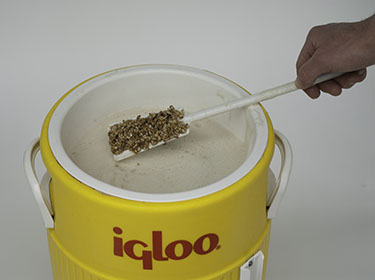Mash Starches
TroubleShooting
Vadim Kotlyar - Hartford, Connecticut asks,
Do starches quickly become solubilized or do they remain trapped in the grist when the strike water is added? This question is regarding how a recirculating system behaves and whether there would be any effect if the recirculating wort were being heated above a desired mash temperature when passed through a heat exchanger. Are the starches and their breakdown products mostly in solution along with the enzymes, or are they still in the grist solids for most of the mash time?

But not all of the starch molecules leave the grist particle immediately. This means that enzymatic degradation occurs both in the bulk liquid phase of the mash and within the grist particles that still contain starch and enzymes. In order for malt enzymes to act upon their starchy substrates, these two players must come into physical contact and the starch molecules that move into the bulk aqueous phase are much more available to enzymatic encounter than the starches that remain trapped within grist particles. If the only thing we wanted to do in the brewhouse was convert malt starches into fermentable sugars, we would mill very finely to speed up starch conversion. Since we need the malt husk for wort separation it is important to strike a balance between these two conflicting objectives.
The important thing with this discussion is that malt enzymes are also partitioned in the mash; some are floating about in the bulk aqueous phase and some are within malt particles. Some of the enzymes that are floating about in the open ocean of wort are exposed to the heating element used in recirculated mashing systems. If the heating element is not properly selected there is a risk that the enzymes will be exposed to high heat and subsequently denatured.
In practice, the total time when the heated wort is higher than the bulk mash temperature is short because the wort is pumped back into the mash and tempered. It is also the norm to select low Watt density heating elements to prevent exposing enzymes to damagingly high surface temperatures. Suffice to say, these systems can be designed to work quite well. Some of the things that could cause problems with these systems include: Heating elements that expose enzymes to very high temperatures, restricted and/or slow wort flow that prolongs the duration of higher temperature exposure, and improperly controlled systems where the heating set-point in the recirculated wort stream is much higher than the mash temperature set point. All of these could result in excessive damage to malt enzymes and negatively influence conversion.
